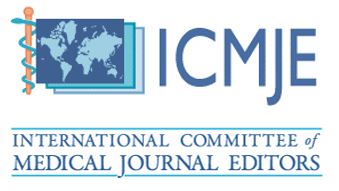Risk Factors of Central-line Associated Bloodstream Infection among Adult Patients on Parenteral Nutrition
DOI:
https://doi.org/10.51200/bjms.vi1.5047Keywords:
risk factor, central-line associated bloodstream infection, adult, parenteral nutritionAbstract
Central venous catheter (CVC) is preferred for the administration of parenteral nutrition (PN) as it allows a longer period of use and higher osmolarity cutoff. However, one of the common complications is central-line associated bloodstream infection (CLABSI), which increases mortality and healthcare burden. This study aims to determine the prevalence and risk factors of CLABSI among adult patients on PN. This is a cross-sectional study involving all adult patients at Hospital Queen Elizabeth, Sabah who received PN via CVC from 1st April 2022 to 31st March 2023. Potential risk factors of CLABSI were identified from medical records. Prevalence of CLABSI was calculated and associated risk factors were determined using multiple logistic regression. Of 112 patients, more than half were male (n=70, 62.5%) with a mean age of 53.4±15.1. Sixty-nine patients (61.6%) were from the surgical ward, while the remaining were from the intensive care unit (n=25, 22.3%), medical (n=9, 8.0%), haematology (n=5, 4.5%), gastroenterology (n=3, 2.7%) and burn wards (n=1, 0.9%). The median PN duration was 9 days (IQR=5-19). CLABSI was present in 25 patients (22.3%). Of all potential factors, PN duration demonstrated a statistically significant association with CLABSI, whereby each additional day of PN via CVC increased CLABSI risk by 1.07 times (OR=1.07; 95% CI=1.03-1.12; p<0.001). PN contributes to the risk of CLABSI due to the preference of microorganisms for dextrose, which explains the increased odds of CLABSI with prolonged PN use. Longer PN duration also means longer catheterization, exposing patients to a higher risk of infection. CLABSI may warrant withholding of PN or switching to a peripheral route, which necessitates reduced PN composition due to lower osmolarity cutoff and causes suboptimal nutritional status. Infection may also delay interventional procedures, increase length of stay and lead to further complications. Therefore, PN duration should be minimized whenever possible to lower the risk of CLABSI.
Downloads
Published
How to Cite
Issue
Section
License
The copyright of the article belongs to the authors, who retain ownership of their work published in the journal. Their work is distributed under the CC BY-NC 4.0 license








1.png)




